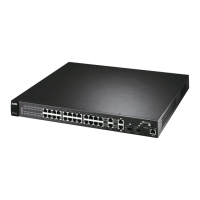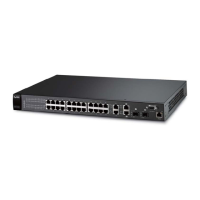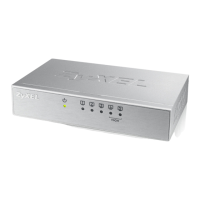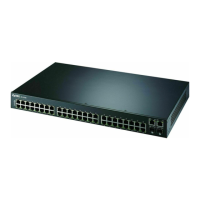ES-3124 Series User’s Guide
Chapter 8 VLAN 103
8.6 Protocol Based VLANs
Protocol based VLANs allow you to group traffic into logical VLANs based on the protocol
you specify. When an upstream frame is received on a port (configured for a protocol based
VLAN), the switch checks if a tag is added already and its protocol. The untagged packets of
the same protocol are then placed in the same protocol based VLAN. One advantage of using
protocol based VLANs is that priority can be assigned to traffic of the same protocol.
Note: Protocol based VLAN applies to un-tagged packets and is applicable only when
you use IEEE 802.1Q tagged VLAN.
For example, port 1, 2, 3 and 4 belong to static VLAN 100, and port 4, 5, 6 and 7 belong to
static VLAN 120. You configure a protocol based VLAN A with priority 3 for ARP traffic
received on port 1, 2 and 3. You also have a protocol based VLAN B with priority 2 for Apple
Talk traffic received on port 6 and 7. All upstream ARP traffic from port 1, 2 and 3 will be
grouped together, and all upstream Apple Talk traffic from port 6 and 7 will be in another
group and have higher priority than ARP traffic, when they go through the uplink port to a
backbone switch C.
Figure 47 Protocol Based VLAN Application Example
8.7 Configuring Protocol Based VLAN
Click Advanced Applications, VLAN, VLAN Port Setting, Protocol Based VLAN to
display the configuration screen as shown.
Note: Protocol-based VLAN applies to un-tagged packets and is applicable only
when you use IEEE 802.1Q tagged VLAN.

